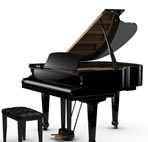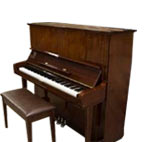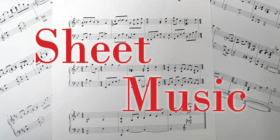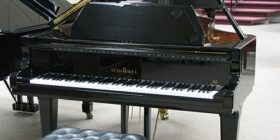
Grimaud, a bold reinventor of phrasings, admires “the more extreme players . . . people who wouldn’t be afraid to play their conception to the end.” Photograph by Lise Sarfati.
One day in July, Hélène Grimaud was practicing the piano in a hotel room in Munich. The Palace, where she was staying, is near the Prinzregententheater, and is unusually accommodating of classical musicians; Room 606 comes equipped with a Steinway. Grimaud needed to work on the piano part to Mozart’s concert aria “Ch’io mi scordi di te,” which she was scheduled to record the next day, for Deutsche Grammophon. The instrument, an old upright, was not well tuned, but that did not bother Grimaud, who does not fetishize refinement. Offstage, Grimaud, who is small, often resorts to standing on the balls of her feet. But at the piano her powerful shoulders and muscled forearms make an impression. She goes at the music with flat-fingered stabs, her body crouched over the keyboard, like a swimmer preparing to dive.
Grimaud’s room was mostly glass, and she likes musical extremes, so the place soon vibrated with sound, augmented by the grunting chant with which she marked passages in the aria. In “Ch’io mi scordi,” the piano plays faithless lover to the brokenhearted soprano. Soprano: I can’t bear to leave—I’ll stay with you forever, whether you want me to or not. In response, the piano teases, flirts, revels in being desired. Grimaud, who once told the Times that she should have been born a boy, played the exchange with a taunting lilt—La-da deeh-da dah-da-dah. Grunt. Da-dah-da dah-da la-da-dah. Grunt. By the time she got to the rolling arpeggios of the song’s resolution, you felt certain that the soprano had chosen the wrong shoulder to cry on.
Grimaud doesn’t sound like most pianists: she is a rubato artist, a reinventor of phrasings, a taker of chances. “A wrong note that is played out of élan, you hear it differently than one that is played out of fear,” she says. She admires “the more extreme players . . . people who wouldn’t be afraid to play their conception to the end.” Her two overriding characteristics are independence and drive, and her performances attempt, whenever possible, to shake up conventional pianistic wisdom. Brian Levine, the executive director of the Glenn Gould Foundation, sees in Grimaud a resemblance to Gould: “She has this willingness to take a piece of music apart and free herself from the general body of practice that has grown up around it.” Grimaud also tries to move her audience. Emmanuel Pahud, a flautist who has played recitals with her, says, “She is a deep romantic who—probably the German language is more suitable—goes where the belly’s hurting.”
As she practiced the Mozart, Grimaud sometimes slowed to replay passages, slightly altering their emphases. These adjustments did not take much time—one or two tries, and she moved on. She had played the score only twice before, but she is a fast learner. She paused over a phrase in which the singer grows faint with grief; Mozart employs all twelve tones of the scale, in an arresting disruption of the piece’s key, E-flat major. “This is about as modern as Mozart gets,” Grimaud said, with pleasure.
At one point, her partner, the photographer Mat Hennek, stepped out of the bedroom and asked her to help negotiate the details of a piano delivery for an upcoming concert, in Gstaad. Grimaud broke off and discussed the matter in a phone call, then came back and picked up where she had left off. All told, her preparation for the recording session took only about twenty minutes. She stood up to leave. “Let’s keep it fresh for tomorrow,” she said, eager for dinner.
Grimaud, who is forty-two, has blue eyes and motile sandy-brown hair. At a recent performance, her hair was up for the Mozart, down for the Liszt, and back up for the encore, a transcription of Gluck’s “Dance of the Blessed Spirits.” On album covers, her hair telegraphs a mood. It is pinned up in a Clara Schumann-like bun for a Brahms recording, and on the cover of “Credo”—a CD of Beethoven and a pair of mystic-minded modern composers—it is tucked behind her ears, in wan, heroin-chic strands. Ordinarily, her hair is shaggy, with too-busy-to-blow-dry bangs.
Grimaud has been recording since she was fifteen, and she has put out some twenty CDs in the past twenty-five years. She plays around a hundred concerts a year. Her strongly interpretive playing has made her a favorite among many conductors and reviewers. For others, though—Michael Lang, the president of Deutsche Grammophon, calls them “the conservative classical police”—her style is too far outside the norm, the score too much a plaything. Grimaud says, “It’s not everyone’s taste, perhaps because it’s too impulsive, more emotional than controlled.”
Yet, at a moment when vast catalogues of classical recordings are moving onto the digital cloud, Grimaud is at an advantage. Her albums aren’t merely proficient tours through the repertoire; they are highly personal explorations that can stand out among dozens of rival performances. And in the concert hall Grimaud can offer surprises, something rarely provided by players who have been processed by the conservatory machine.
Whenever Grimaud can manage, she doesn’t perform at all: she is at a conservation center for wolves that she co-founded, in 1999, in northeast Westchester County, where she helps care for the animals. Grimaud does not relish the stiffness of the classical world. In a 2004 photograph of her, prized on the Internet, she is rehearsing with an orchestra wearing what looks like a wife beater; more recently, she apologized to a music reporter for showing up for an interview smelling of deer meat. On some album covers, you don’t even see the piano; you just see her face, which is striking enough to withstand the kinds of closeup that the recording industry normally reserves for pop stars.
Perhaps not coincidentally, this strategy helps Grimaud attract younger, less committed listeners who shop for music online. “Hélène is attractive, and that makes a difference,” says Paul Foley, who oversees classical-music marketing in the U.S. for Universal Music, which owns Deutsche Grammophon. “Her covers can compete against the pop records that are on the home page of iTunes.”
Grimaud grew up in Aix-en-Provence and was, by her own admission, “a fairly contrary child.” When her class was instructed to draw chickens, she drew pictures of wire mesh. Grimaud, whose parents taught Italian and Italian literature, dreamed of being a veterinarian or a public attorney, of “rectifying injustice.” Her behavior often leaned toward the bizarre, though she does not always seem to recognize this. She cheerily recalls the story of bringing her father’s letter opener into class one day, with the intention of stabbing a teacher who, she felt, had treated another child unfairly. The weapon fell out of Grimaud’s bag as she tried to hide it in her desk, and it was confiscated. “I was very disappointed to have shown so little character and not gone through with my plan while I still could,” she says.
Grimaud soon turned her frustrations on herself. If she fell and hurt her right knee, she carved an identical mark on the other. Cutting herself, she recalls, was “more than pleasurable. It was a feeling of accessing something else. I wouldn’t have done it otherwise.”
Her parents, determined to socialize young Hélène, tried judo, tennis, and dance lessons. Grimaud hated them all, but particularly despised ballet—the costumes reminded her of the dolls that she flung across her bedroom. Full of nervous energy, she folded and refolded sweaters until her parents begged her to stop and come down for dinner. What distinguished her behavior from that of obsessive-compulsives, she says, was her high self-esteem: “I had people who supported me, who helped me believe in myself, so it doesn’t really fit the description.”
One day when Grimaud was seven, her parents took her to a music-appreciation class. Each child was asked to hum the melody of Schumann’s “The Happy Farmer.” Grimaud did so with uncanny accuracy. The teacher advised Grimaud’s parents to start their daughter immediately on the piano. Her mother balked, as Grimaud remembers, afraid that all those hours at the piano weren’t likely to make her “more conforming or normal or lighthearted, or something.” Her father had no such worries; he arranged for an upright to be delivered to their house. It turned out that Grimaud didn’t need to dissipate her energy; she needed to focus it. In playing music, she finally met a task absorbing and complex enough to satisfy her. It felt “vivifying,” she remembers, to immerse herself in a world in which symmetry and order reigned.
Grimaud quickly surpassed other children who had been playing piano for years. “By nine, I was already obsessed,” she remembers, in love with “the pure pleasure and evasion of being at that instrument.” But, rather than spending all her time at the keyboard, she did much of her “practicing” in her head. “Some wonderful pianists practice eight hours a day,” she says. “I was never really that person.” She notes of her childhood, “I don’t remember ever having had a piece that I found hard.”
She was helped along, she says, by having synesthesia—the conflation of one sense with another. She first noticed this phenomenon, at the age of eleven, while playing the Prelude in F-sharp Major from Bach’s “Well-Tempered Clavier”; she has described seeing a “shapeless stain . . . between orange and red.” Afterward, she was surprised to learn that this wasn’t normal. Seeing music as colors helped her memorize scores and made playing the piano feel even more visceral. Even today, when she plays, especially in concert, colors can come unbidden, each connected to a particular key. C minor is black. D minor is blue. E-flat major, the key of the Mozart aria, is “very bright—something similar to sunlight . . . and sometimes switching to green.”
She completed an eight-year piano curriculum in four. When she was twelve, in 1982, Grimaud applied to the Conservatoire de Paris. Among the pieces that she played to gain entry were Chopin’s Second and Third Sonatas; Chopin, a tempestuous pianist himself, was a musician with whom she felt a kinship. Grimaud, who is left-handed, thought that the Classical greats discriminated against players like her. In their music, the left hand was largely devoted to chords, while the right played the melody. “Chopin opened up the piano for the left hand,” she says. Grimaud was accepted to the conservatory, and began travelling from Aix to Paris each week for classes, staying for two days with a host family. She completed her regular schooling through a correspondence course.
Playing the piano in Paris made Grimaud happier, but hardly happy. She wandered the city in a loose sweater, to disguise her figure, and repelled men’s stares with her own. She read the novels of Dostoyevsky, enjoying especially the intense irony of “Crime and Punishment.” “I wanted to have the courage and I killed. . . . Did I murder the old woman? I killed myself”—she understood lines like that. She was several years younger than the other students at the conservatory, and she fell deeply in love with an older man. In “Variations Sauvages,” a memoir she published in 2003, the man is identified simply as “him, the one I had loved so.” (The book has been translated into English, as “Wild Harmonies.”)
Laurence Contini, another piano student, remembers Grimaud as “a solitary being who watched everything” and who rarely joined the older kids, after class, at the Café de l’Europe. She recalls hearing Grimaud for the first time: “I knew immediately how gifted she was. She had sensibility and assurance.”
The typical French pianist was supposed to be an airy being, chasing after Debussy’s wispy clouds. Grimaud wanted to try something stouter. The pieces she was told to play for her second-year evaluation confirmed her concerns: they consisted of études by Chopin, Liszt, and Scriabin. When her teacher insisted on this program, she left and went home to Aix, where she performed Chopin’s Second Concerto with an orchestra of students and professors from her old conservatory. Being at the swirling center of an orchestra enthralled her. In her memoir, she writes, “I was completely myself, unmoored, borne aloft by the brand-new and delightfully breathtaking feeling of absolute freedom.”
Afterward, to her relief, the Conservatoire de Paris didn’t punish her. In fact, when she gave a tape of the Aix performance to her teacher, he passed it on to the head of recording for the Japanese classical label Denon, who signed her up. Grimaud insisted that her first record be devoted to Rachmaninoff.
Her performance of the challenging Second Piano Sonata came out in 1986, when she was sixteen. The contrast between the diminutive teen-ager and the colossal Rachmaninoff piece was striking. The recording, which is lush and dramatic, showed her obsession with emotions, perhaps surprising in someone who was not conventionally emotional. The first time she deeply cried, she says, was after playing Brahms’s D-Minor Piano Concerto, as a teen-ager: “I was already in love with Brahms, but I knew right when I heard it that it was going to be one of mine.” It remains one of her favorite pieces. “It is a sort of requiem written in response to Schumann’s suicide attempt,” she notes. She especially loves the first movement of the Brahms, and one of her favorite passages is a moment in the recapitulation when the thunderous agitation that the piano has declared dissolves into something wistful, almost ghostly—a moody wanderer looking for comfort.
Today, Grimaud considers some of her early playing too slow and too attentive to detail at the expense of “the big arc,” but at the time she felt febrile with ideas that she had to share. Though she believes that Romantic composers like Brahms and Chopin hold special wisdom, she is not wedded to that style. “If you talk to me, you can call a lot of things Romantic,” she says. “You can call Bach’s Sixth Partita as Romantic as any Wagner opera. Romanticism is, for me, much more than a period in culture.”
Critics were immediately divided over Grimaud’s playing: was she elucidating composers’ intentions or fracturing them? The discussion was, to some extent, ad feminam. Though the Rachmaninoff recording won a Grand Prix du Disque, she still remembers that, around this time, a French critic compared her way of approaching the concert stage to that of a little goat. Here was a teen-age pianist who presented herself as not just a technician but also an innovator. She soon felt disliked, singled out. She felt that people saw her, as she writes in her memoir, as “that pianist who deserved to be whipped.”
By the end of the eighties, Grimaud was no longer sure that she wanted to be a pianist. Takashi Baba, who, in 1987, produced her second recording—solo pieces by Chopin, Liszt, and Schumann—remembers a young woman who liked Maggi noodles and cried when she couldn’t get a phrase to come out the way she wanted. Grimaud was in what she calls a “floating phase.” As she puts it, “There were days when I had zero interest in setting foot outside.”
Then, in the summer of 1989, she was invited to Lockenhaus, the Austrian chamber festival founded by Gidon Kremer, the Latvian violinist and conductor. At the time, Martha Argerich, the Argentine pianist, was in residence there. Argerich personifies the independent-minded musician. In the long-standing debate over the relative virtues of precise, restrained pianism versus impassioned, idiosyncratic playing, she is the current leader of the free-spirit camp. She plays pieces when she feels like it and as she feels them, rather than as the audience expects to hear them. Grimaud found Argerich inspiring, though what she learned from her was less about technique than about approach. “There was an immensely comforting feeling about being in her presence,” Grimaud recalls. “She confirmed that it was O.K. to take chances.”
Argerich’s daughter Anne-Catherine, then eighteen, was also at Lockenhaus, and she found Grimaud to be in love with ideas and theories, “always putting in a bit of a metaphysical bent to things.” Anne-Catherine’s half sister, Stephanie, four years younger, remembers joining Grimaud in performances of “Michael Jackson choreography, especially the more provocative ones.”
Soon after Lockenhaus, Grimaud’s agent at the time, Gregg Gleasner, suggested a concert in America. Grimaud feels that she was destined to come to the States. “I had a fascination with this country,” she says. In the summer of 1990, she made her American orchestral début, performing the Schumann Piano Concerto with the Cleveland Orchestra. She wanted to come back at once, and realized that it would be easier if she spoke English, so back in Paris she set out to learn it. Within three months, she says, she had mastered the language entirely by watching TV shows, movies, and videos. She continues to look out for new words. “ ‘Superintending’—that’s a word I want,” she said to me. In her pursuit of English, one gets a glimpse of how easily the piano must have come to her, and also of her passion for alternatives and exceptions.
Later in 1990, Grimaud returned for her first full American tour. Gleasner remembers her carrying her concert clothes in a brown paper bag: “She’d arrive ten minutes before the concert and pull out a blouse from the sack.” After a rehearsal for one program, in Sarasota, she met Jeff Keesecker, then a bassoonist with the Florida West Coast Symphony. When he moved to Tallahassee, a year later, she went with him. She was twenty. The city was an unusual choice for a musician with a growing solo career. “She didn’t want some violinist boyfriend in New York City,” Keesecker recalls. The two lived together in Keesecker’s house, with Grimaud commuting to Europe and the bigger U.S. cities for concerts. Bookings were never a problem. “I think she always thought she’d have a career,” Gleasner says. “It was just a matter of turning it on and turning it off.”
In Florida, she could slow down and take on challenges. Keesecker remembers her learning the Burleske of Richard Strauss. “Only the bravest pianists attempted it, so she wanted to do that,” he says. Grimaud recalls with pleasure the piece’s “sarcastic, decadent element.” After about four years together, she and Keesecker broke up, and in 1994 Grimaud moved to New York. “There is something about my character that, when I turn the page, I don’t look back,” she says.
In New York, Grimaud led a picaresque life. In three years, she changed apartments roughly every three months. “I do not form attachments easily,” she notes. She says that, other than her concert clothes, she had only one outfit. When she wanted to practice, she sometimes borrowed the pianos in the basement of the Steinway facility, on West Fifty-seventh Street. She did this, in part, to prevent herself from becoming dependent on a particular instrument.
She also exercised her remarkable ability to prepare without actually playing. Mat Hennek, her current partner, remembers that one day, when he and Grimaud were first dating, they went shopping in Philadelphia and then to a Starbucks. At one point, he recalls, “I said to Hélène, ‘Hélène, you have a concert coming. Did you practice?’ And she said, ‘I played the piece two times in my head.’ ”
Grimaud made her début with the New York Philharmonic, under Kurt Masur, in 1999, and her Carnegie Hall début, playing the Schumann concerto, in 2002. In late 2006, she played a sold-out solo recital of Bach, Chopin, and Rachmaninoff there. By then, the critical divide over her style was well established. Anthony Tommasini, the Times critic, praised her as “a focused, at times ferocious, pianist who favors a big steely sound and bold, unsentimental playing.” But, if she played Bach like Chopin, she also played Chopin a bit like Bach, leading one critic to ask, regarding her performance of the Berceuse, Chopin’s famous lullaby, “With all that plunking going on, how can baby sleep?”
Gleasner says of Grimaud, “The playing can sometimes frighten people—I don’t know if that’s the right word, but it can definitely be disturbing. She misses notes and she does all these things that make some people think, Oh, God.”
In the early nineties, Grimaud, then living in Tallahassee, met and grew friendly with a loner who lived on the outskirts of the city. He had a collection of automatic weapons that he let her shoot, and he kept a wolf as a pet. Its name was Alawa. The first time Grimaud met Alawa, she recalls, it lay down on its side and allowed her to caress the length of its body. “I’ve never seen her do that,” the owner said of the wolf. “Even with me.” Grimaud got to know Alawa and was flattered by the trust the wolf seemed to give her. (Grimaud now thinks that Alawa may have been a wolf-dog hybrid.)
Grimaud read about the plight of wolves, many species of which had been hunted nearly to extinction, and formed plans to open a center to protect them. She took a class on ethology and started saving her concert earnings, with an eye toward funding the project. She and Keesecker adopted a pair of wolves. A third animal, a wolf pup, wound up in the Alphabet City apartment she shared with her next boyfriend, a photographer named Henry Fair. “We were not supposed to say it was a wolf,” Stephanie Argerich, who house-sat for the couple at the time, recalls. “We were supposed to say it was a big dog.”
In 1997, Grimaud bought about six acres in South Salem, in Westchester County, and moved there. She hired workers, and helped them install fences and landscape hollows, so that they could be used as dens. In 1999, she opened a conservation and education center. In the past decade, the facility has become a considerable success and a respected part of the movement to protect wolves. It has sixteen Mexican wolves—only some fifty of the animals exist in the wild in the U.S. Grimaud remains both active on its board and involved in its daily work. Her taste for liverwurst, she says, came from mixing it with pills for the animals.
The relationship with Fair lasted until 2005. After their breakup, he refused to leave their house, which was on the grounds of the center. “I guess it strengthened his anger or disappointment,” Grimaud says. “I don’t know.” A lengthy dispute followed, which was finally resolved last month; Fair, whose name was on the property deed, agreed to move out, in return for a payment.
In 2006, Grimaud met Hennek—as with Fair, on a photo shoot. Hennek accompanies her on some of her tours, managing his own career while helping her manage hers. They seem a happy couple, affectionate and able to avoid the trap of her fame. They are currently renting a condominium in Weggis, a mountainside town on Lake Lucerne, near where Rachmaninoff had his summer retreat. In their home is the first piano that Grimaud has ever owned: a concert grand from Steinway’s factory in Hamburg.
Weggis is near the airport in Zurich, and Switzerland taxes foreign residents only lightly, which is useful for touring musicians. Nearby Lucerne has good hospitals. In the spring of 2010, Grimaud had a tumor removed from her abdomen. She finished treatment and that summer returned to playing with renewed zeal. She took only five days off from August until the end of that year. She is confident that she has been restored fully to health, and does not like to dwell on the drama of being sick. In an interview with the Times, she referred to the months she was recuperating as “my sabbatical.”
One day in July, I watched Grimaud play the pieces on “Resonances,” her current CD, in the Stadthalle, in Bayreuth. It was the day before the opening of the summer Wagner festival. The theatre was full, with a lively crowd. “Hélène has her own audience, a different audience,” Lang, the Deutsche Grammophon president, says. “There’s less of a funereal feel.”
This was, by Grimaud’s estimate, her twentieth concert with the same repertory since she returned to performing. “It’s every time new,” she says. “It puts you in your place over and over again.” The performance—Mozart, Liszt, Berg, and Bartók—was impassioned and focussed. Grimaud explains her approach to playing with a metaphor borrowed from veterinary medicine. “The tip of the needle becomes the center of your universe,” she says. “You know, it’s the sound, it’s the center of the sound, it’s the bottom of—it’s the—it’s everything.”
Grimaud chose the pieces on “Resonances” not just because she liked them but because they created potent connections among themselves. Grimaud opened with Mozart’s Sonata in A Minor, playing it as if she were lashing a carriage down the streets of Salzburg. “It’s Mozart’s only sonata with fortissimo markings,” she says. “I like to think of it as something quite extreme, and that’s how I play it.”
Then came Alban Berg’s Piano Sonata, his Opus 1; the work captures the composer, known for his expressionistic dissonances, at his most traditional. “It always makes me feel as if it were something Berg was whispering into your ear,” Grimaud explains. After intermission, she took on Liszt’s dashing B-Minor Sonata but, paradoxically, tamped down the theatrics. During the opening bars, when many pianists tee up a coming explosion of sound with pairs of staccato taps on the piano, Grimaud held the keys for a muted tenuto. Somewhat farther on, where even amateurs seize the chance to make the piano lid fly, she ignored the score’s call for a triple-forte. She says that her strategy draws attention to the piece’s modernist qualities; she sees Liszt as even more innovative than Berg. Finally, she finished with Bartók’s “Romanian Folk Dances.”
Her “musical promenade down the Danube,” as she calls it, was also a tutorial. Liszt, Mozart, and Berg seemed to be passing phrasings and cadences back and forth. As for Bartók, whose “Romanian Folk Dances” served as “a sort of integrated encore” in the concert, he became part of a conversation that he is too often excluded from, largely because of his interest in ethnic songs.
The pieces in the classical canon have been performed so many times that presenting them even a little differently can disorient the listener. Grimaud’s concert could have agitated her audience, but something extra-musical was helping her. She presented her program with intense commitment, sustaining a mood from piece to piece, so that the audience felt pulled into a narrative. Levine, at the Gould Foundation, notes that she “seems so absorbed in the music, so attentive. She has that quality—getting back to Gould—of ekstasis.” Grimaud explains, “A concert must be an emotional event, or who needs it? You can just stay home and listen to your favorite recordings.”
Late one summer evening, Grimaud was in South Salem, at the nursery of the wolf center. She was spending the night, in order to bond with some cubs that had just arrived. Her attraction to the animals was not hard to explicate. Wolves are misunderstood outsiders, singled out by humans for centuries as the animal that deserves to be whipped. The center has seven thousand visitors a year, many of them in school groups, but at night it is deserted, dark woods. “This place is really magical,” she said. “It has something special.”
Grimaud was sitting, cross-legged, on the ground while two eleven-week-old pups—Alawa, pale gray and named for the wolf she met in Florida, and Zephyr, black—raced around. Juvenile wolves do not have the disquieting lope of the adults; they seem like dog puppies, but with more pronounced snouts. In the next enclosure, Atka, a nine-year-old Arctic gray wolf, aimed a long, lamenting howl at the orange moon. “That’s a B-flat,” Grimaud said. Two Mexican wolves, in a nearby enclosure, joined in, several tones higher, glissando-ing down while the red wolves added a frenzied pizzicato.
Wolves form packs with well-defined jobs, and their members are coöperative and hierarchical, like the players in an orchestra. The animals howl to mark their territory, to scare off enemies, to embolden themselves for the hunt. “They give each other élan, courage, ‘Let’s get down to it,’ ” Grimaud said. But “the nicest function,” she added, “is rejoicing, what biologists call ‘social glue.’ Their howling sends a lot of positive interactive feeling flying around.” It’s not a bad definition of music.
Grimaud said that she saw herself as a beta in the music world. “The in-between role is one I’ve always liked,” she said; she wants to be “a link, a medium” between the composer and the audience. Most people would consider a concert soloist an alpha; her rhythms set the orchestra on its path, and can cuff it when it strays. Of course, there is another alpha, the conductor, whose every gesture and expression command obedience. Among wolves, the alpha male and the alpha female lead a pack. In the orchestra, they play out what Leonard Bernstein once called “the age-old question”: “In a concerto, who is the boss, the soloist or the conductor?”
That night in South Salem, Grimaud was fresh from such a conflict. She had just come back from Bologna, where she had recorded two Mozart piano concertos, with Claudio Abbado and the Orchestra Mozart. Abbado is one of her longtime supporters, and he has conducted her many times over the years. In a DVD filmed at the 2008 Lucerne Festival, in which Grimaud plays the Rachmaninoff Concerto No. 2 with Abbado, she says that playing with him is a “dream. . . . There really is no need for words with Claudio, which is amazing.” This time, however, there was a dispute. According to Grimaud, the taping of the two concertos, the Nineteenth and the Twenty-third, went well; but the next day, when the orchestra had disbanded and Abbado and Grimaud were in the “patch” session—fixing blemishes on the recording—he asked her to perform a cadenza that Mozart had written for the Twenty-third. During the recording of that concerto, they had taped Grimaud playing one by Ferruccio Busoni, the late-nineteenth-century composer. Grimaud had first heard the Busoni cadenza on an old Vladimir Horowitz recording, with Carlo Maria Giulini conducting. “I told myself, ‘When I play the concerto, that’s the cadenza I will play,’ ” she said to me. At the patch session, Grimaud sight-read and played the Mozart—“to humor” Abbado, she said.
Two weeks later, Abbado, having listened to the recording of the two versions, decided that they should use the Mozart. Grimaud refused. “In twenty-five years, I have never had anyone say, ‘Play this cadenza, not that one,’ ” she told me, petting one of the pups. She wondered whether Abbado still thought of her as an immature thinker: “There’s a little bit of a parent-child relationship, where the parent always sees the child, no matter how old you get.” Abbado is a purist, so perhaps the Mozart was the right choice, but musicologically, as Grimaud points out, there is no clear case for it. During Mozart’s time, pianists were expected to improvise their cadenzas; to do otherwise showed a lack of imagination. In that sense, Busoni’s enthusiastic, rococo piece, concluding with both hands playing spunky trills, is more Mozartean than the Mozart.
Grimaud refused to back down. “I simply said no,” she said. Soon afterward, Abbado had Grimaud uninvited from the Lucerne Festival, which she was set to open, in August. Radu Lupu played at Lucerne instead, and Mitsuko Uchida replaced Grimaud in Abbado’s subsequent appearances in London. (Abbado refused to comment on the incident.)
To defy a conductor of Abbado’s stature takes courage, even for a famous pianist: conductors are the social glue of the concert world. But Grimaud has spent a lifetime pushing for artistic control. “Compromise, it has to be said, was never my forte,” she said, adding, “You know, you always have choices. You can go with the flow because it’s easier or you can let your convictions guide your actions if you are prepared to face the consequences. And I preferred the latter. I thought, Life is too short.”
Grimaud didn’t just demur over the cadenza; she fought back. She enlisted the soprano who had sung in Bologna, Mojca Erdmann, and paired her with another ensemble, the Bavarian Radio Chamber Orchestra, with whom Grimaud had performed the concertos earlier in the year. The Bavarian orchestra is egalitarian, led by a concertmaster instead of a maestro. Deutsche Grammophon agreed to the change. The orchestra’s members cancelled their vacations and assembled in late July, in Munich. On the CD, the concertos would be complemented by the Mozart concert aria, and the morning after Grimaud’s practice session in the Palace Hotel the recording session began, at a concert hall at the Residenz, where mad King Ludwig II once held court.
Erdmann was also making a gesture by being in Munich. Grimaud has remarkable pull with other musicians; her confidence heartens them. Recently, she and Jan Vogler, a cellist who records with Sony Classical, went to their respective labels and announced that they would collaborate. “We said, ‘Guys, we just have to do this,’ ” Vogler recalls. “It was nice to see that artists do have some power.” This summer, Grimaud played the accompaniment to a cello recital by Sol Gabetta in Gstaad. Gabetta told me, “I said to my agency, ‘I had the impression for the first time I am really not alone.’ . . . If something good happens, she’s with me. If something negative happens, she’s also with me.”
At the Residenz hall, Grimaud appeared onstage in the same jacket, a silver-and-black Shanghai Tang design, that she had worn in Bayreuth. “Welcome, Hélène,” the concertmaster, Radoslaw Szulc, said. Gracefully, Grimaud walked to the center, among the violinists, cellists, and oboists. In this world, things revolved fully around her. A camera crew was filming a video for the eventual publicity campaign; sound technicians hovered onstage; publicists sat in the velvet seats; Hennek roamed around the hall, taking pictures of his partner.
It was time to rehearse the concert aria. Erdmann appeared onstage, a birdlike blonde wearing a shirt of swirling cerulean and white. Grimaud came in fast the first time, just as she had been playing it in her hotel room. (“Speed is my demon,” she told me.) Erdmann objected that, at that pace, she did not have time for her coloratura. Take followed take, as the performers focussed on getting the piano in balance with the singer. Grimaud’s goal was, as she put it later, “to slip into what the singer is doing and match the color of the voice. It’s a terrific chameleon exercise.”
Erdmann was now ready to be recorded, and the red light went on. She let her voice out for real, neck tendons straining, vowels exploding, “r”s trilling. She was irate, despairing, hopeful. The aria was a parting gift from Mozart to Nancy Storace, a British soprano who had spent time in Vienna; he likely performed it with her just before she returned to England for good. One can speculate that his romantic hopes were unfulfilled. Was the seducer, then, the singer or the pianist? Grimaud playfully followed along with Erdmann, ready to love or betray. Grimaud’s beloved chromatics jangled, as the singer sang of fainting. After only two times through the aria, Grimaud—who had seen a splash of yellow—declared that they were done. “It’s good,” she said. She wondered why anyone had doubted that she could pull it off. ♦
Read more: http://www.newyorker.com/reporting/2011/11/07/111107fa_fact_max#ixzz2K2wPj7VL










